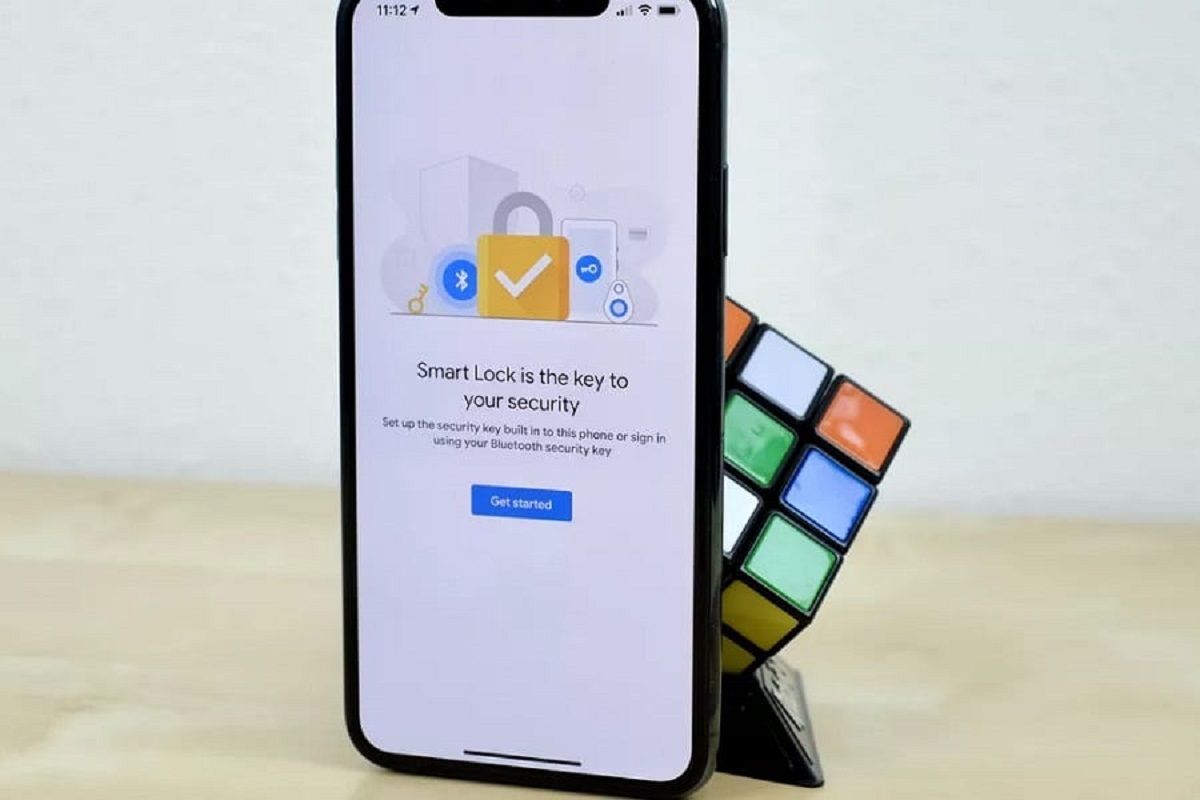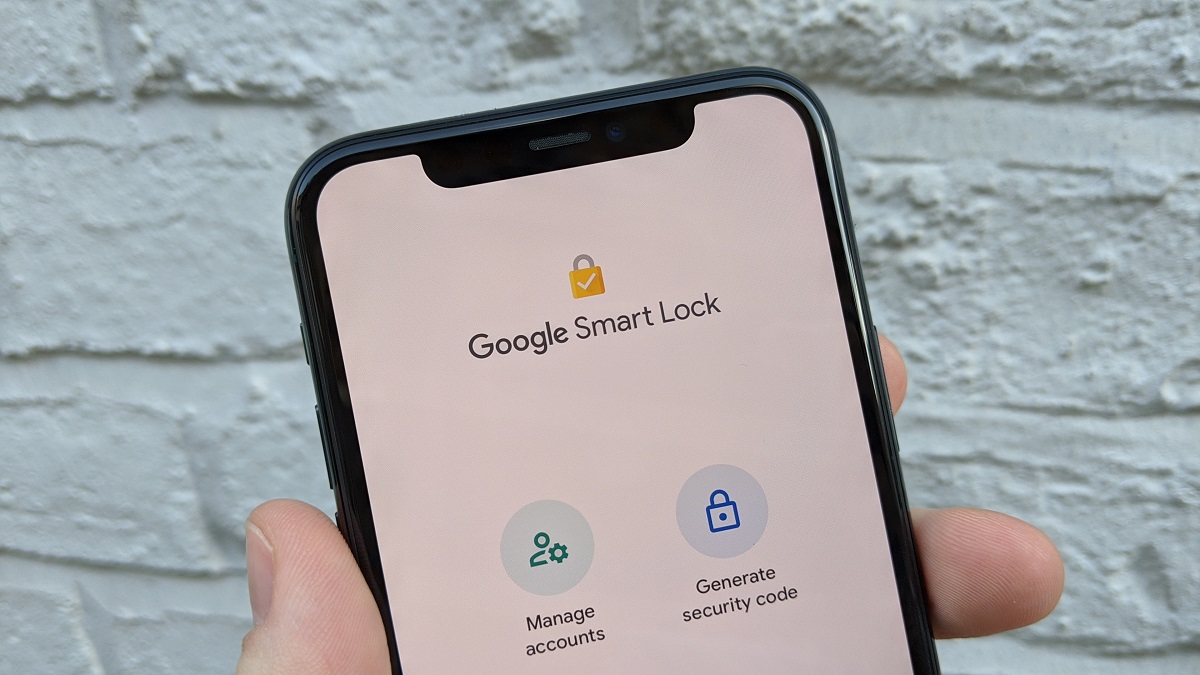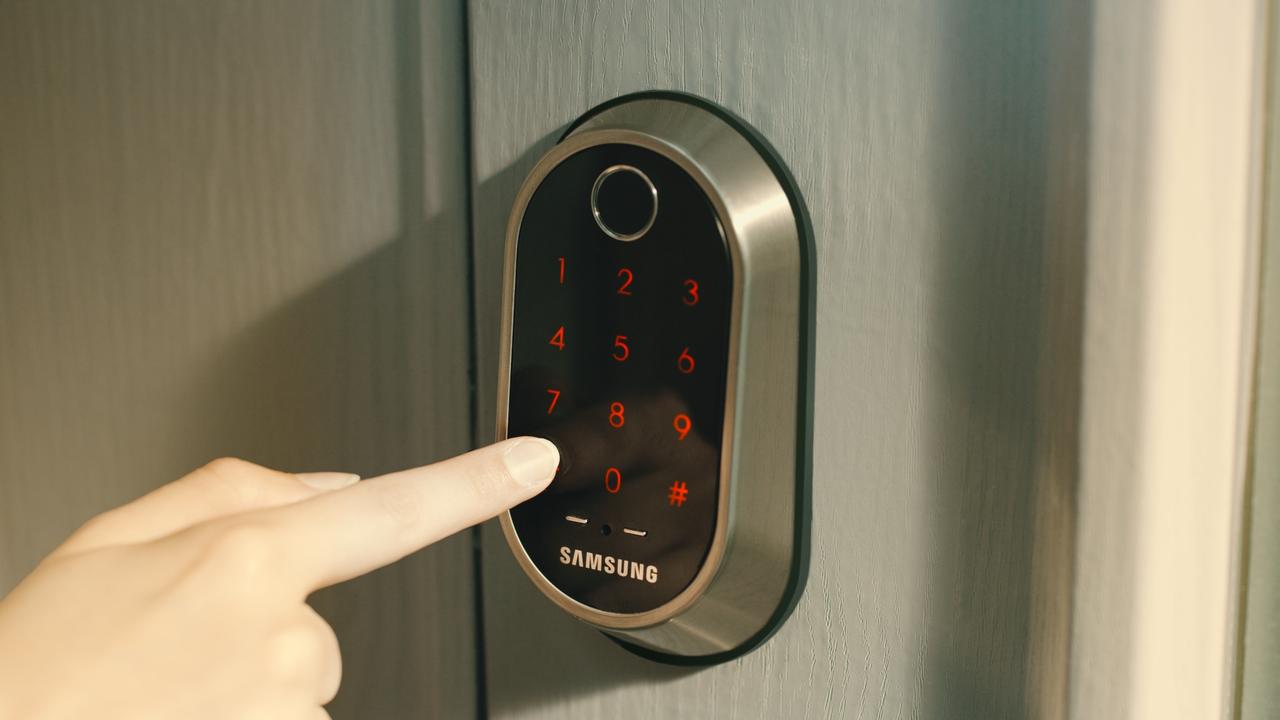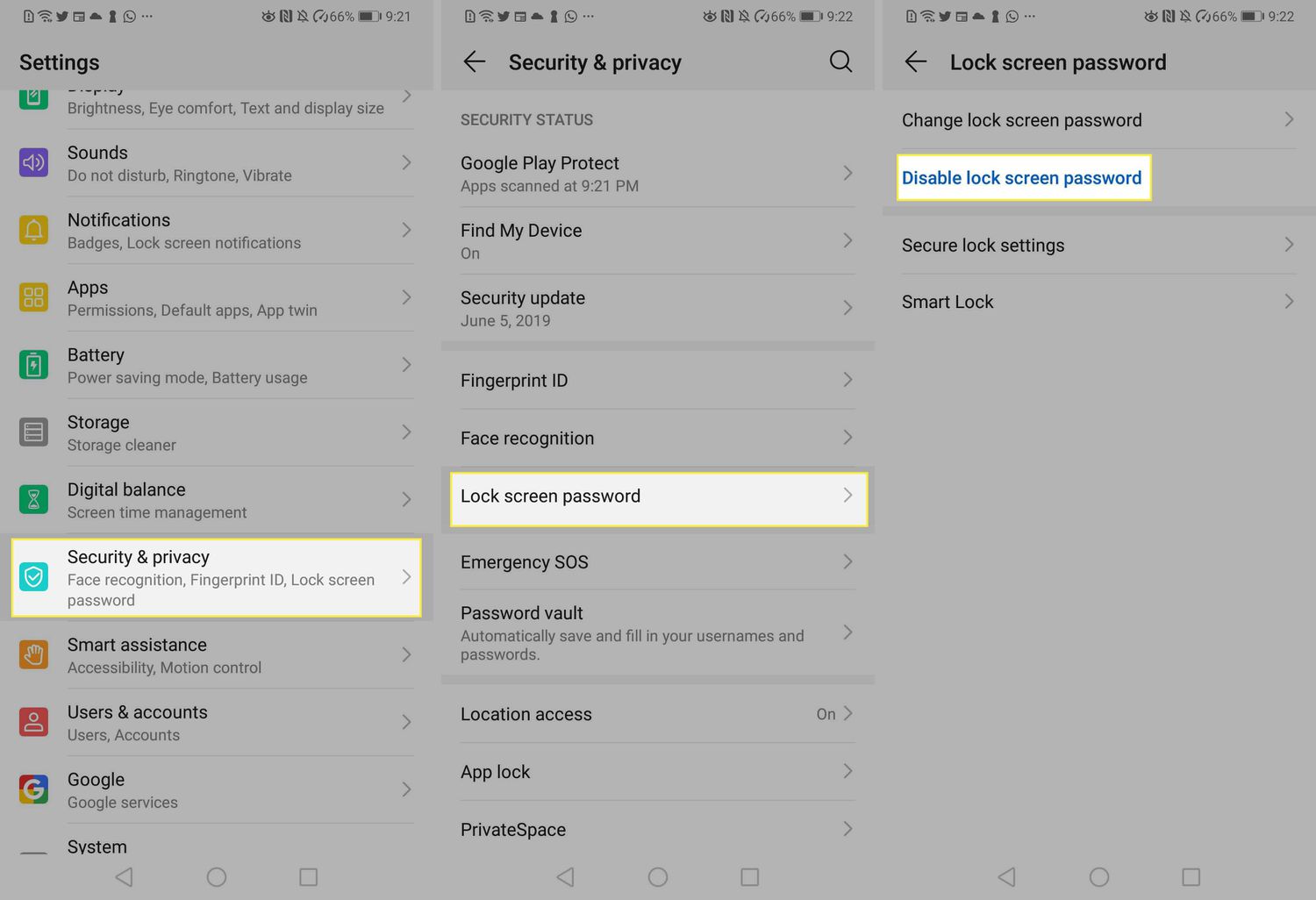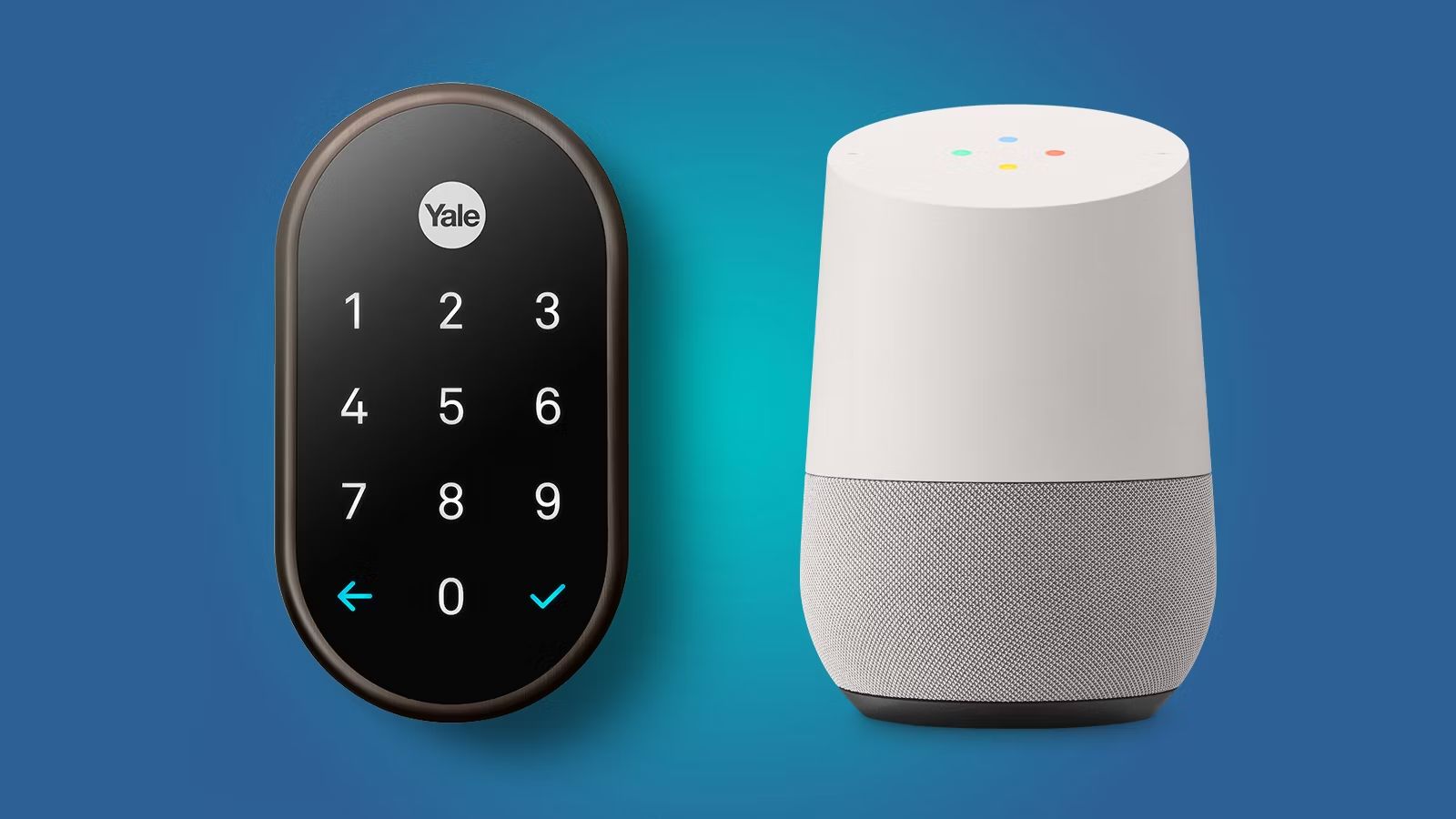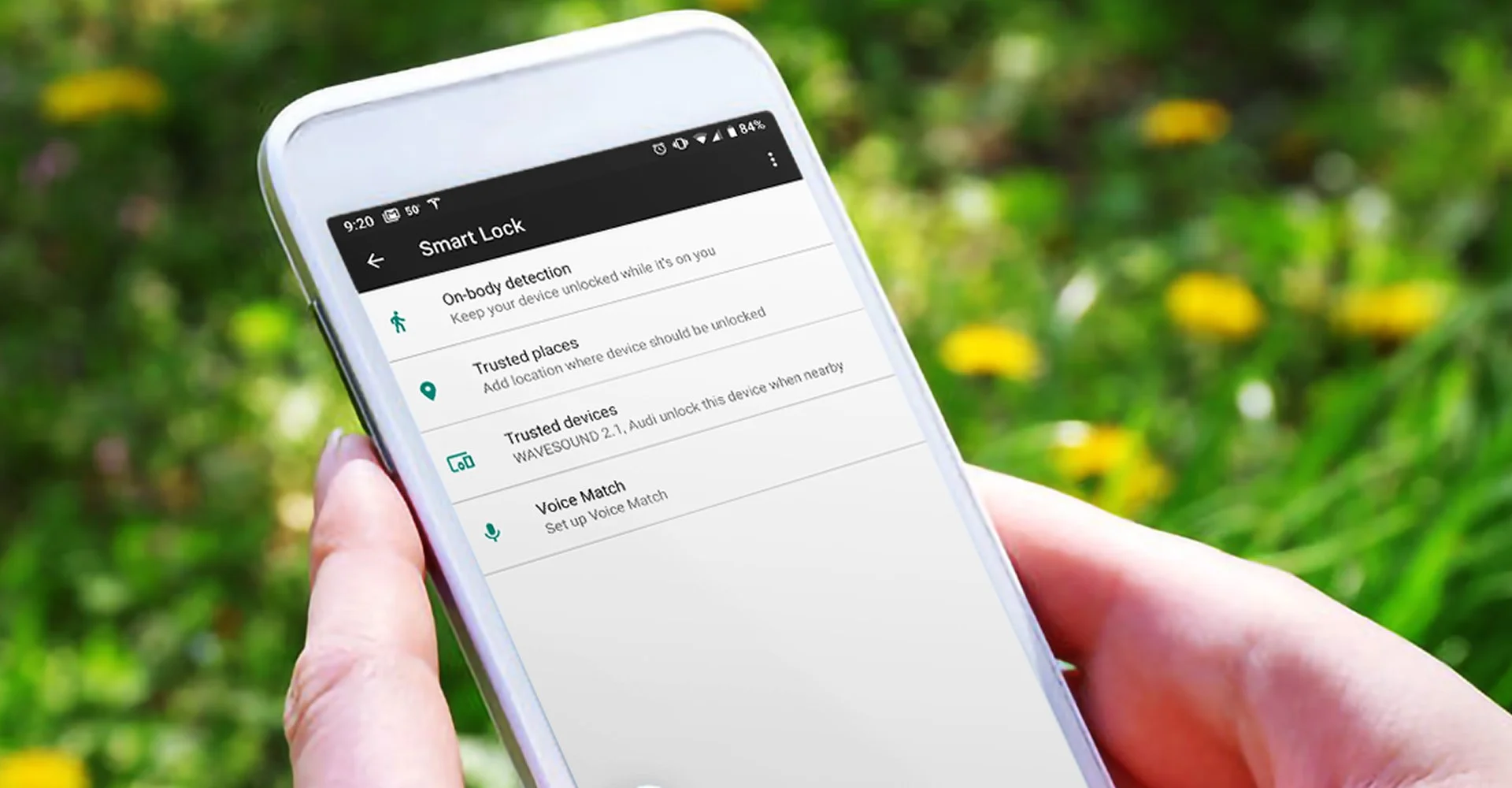Introduction
Welcome to our guide on how to disable Smart Lock by Google. Smart Lock is a feature that aims to enhance the convenience and security of our digital lives by allowing us to bypass traditional password entry methods. While it can be a useful tool, there may be instances where you want to disable Smart Lock for various reasons.
Smart Lock is available on various platforms, including Android devices, Google Chrome, and Google account settings. With Smart Lock enabled, you can unlock your device, access websites, and log in to apps without manually entering your password, thanks to features like facial recognition, fingerprint scanning, and Trusted Devices.
The benefits of Smart Lock are evident. It saves time and hassle by providing you with quick and easy access to your device and online accounts. Additionally, it enhances security by using biometrics or trusted devices as authentication methods. However, there may be scenarios where disabling Smart Lock becomes necessary.
One reason to disable Smart Lock could be privacy concerns. While facial recognition and fingerprint scanning are convenient, some users may prefer not to have their biometric data stored or accessed by Smart Lock. Disabling Smart Lock ensures that your device or Google account will not use these features for authentication.
Another reason to disable Smart Lock could be related to privacy in specific situations. For example, if you often lend your device to someone or have guests using it, you may not want them to have easy access to your device or accounts. By disabling Smart Lock, you can ensure that only you are able to unlock your device or access your online accounts.
If you have multiple devices connected to your Google account, disabling Smart Lock can prevent automatic sign-ins on devices you do not want to have immediate access to your accounts. It gives you more control over which devices are allowed to use the Smart Lock feature.
Now that we understand the potential reasons to disable Smart Lock, let’s delve into the step-by-step guide on how to disable Smart Lock on different platforms such as Android devices, Google Chrome, Google account settings, and Google apps.
What is Smart Lock?
Smart Lock is a feature developed by Google that provides users with a convenient and secure way to access their devices and online accounts without the need for traditional passwords. It offers a variety of authentication methods, including facial recognition, fingerprint scanning, trusted devices, and on-body detection, to make the login process seamless and hassle-free.
Smart Lock is available on various platforms, including Android devices and Google Chrome. When enabled, it allows users to unlock their devices or log in to websites and apps without manually entering their password every time. Instead, users can rely on biometric data or trusted devices to authenticate their identity quickly and effortlessly.
One of the most popular authentication methods used by Smart Lock is facial recognition. By scanning a user’s face, Smart Lock can securely identify the user and grant access to the device or online account. This technology relies on advanced algorithms and sensors to accurately recognize unique facial features and differentiate between authorized users.
Fingerprint scanning is another widely used authentication method supported by Smart Lock. This feature allows users to register their fingerprints and use them as a secure way to unlock their devices or log in to websites and apps. Smart Lock utilizes specialized hardware like fingerprint sensors to capture and verify fingerprints quickly and accurately.
Aside from facial recognition and fingerprint scanning, Smart Lock also supports trusted devices. Users can connect their smartphones, smartwatches, or other trusted devices to their devices or accounts and use them as a means of authentication. With trusted devices, users can bypass the password entry process and gain instant access, ensuring a seamless user experience.
Additionally, Smart Lock offers on-body detection, a feature that keeps the device unlocked as long as it detects it’s on the user’s body. This feature utilizes the device’s built-in sensors, such as the accelerometer and gyroscope, to determine if the device is being carried and used by the authorized user. If the device is put down or falls out of the user’s hands, it will automatically lock to protect sensitive information.
Smart Lock aims to strike a balance between convenience and security. By eliminating the need for frequent password entry, it saves users time and effort, while still ensuring that only authorized individuals can access their devices and accounts. However, there may be situations where users prefer to disable Smart Lock for various reasons, such as privacy concerns or the need for stricter device access control.
The Benefits of Smart Lock
Smart Lock by Google offers several benefits that enhance both convenience and security for users. By leveraging advanced authentication methods, Smart Lock aims to simplify the login process while ensuring that only authorized individuals can access devices and online accounts. Let’s explore some of the key benefits of Smart Lock:
1. Time-saving convenience: Smart Lock eliminates the need for manual password entry every time you want to unlock your device or log in to an app or website. With features like facial recognition or fingerprint scanning, you can quickly and effortlessly access your device, saving valuable time throughout your day.
2. Enhanced security: Traditional passwords can be easily forgotten, hacked, or shared inadvertently. Smart Lock offers a more secure and reliable authentication method by utilizing biometric data or trusted devices. Features like facial recognition and fingerprint scanning provide a higher level of security, as they are unique to each individual and difficult for others to replicate.
3. Seamless user experience: By enabling Smart Lock, you can enjoy a seamless user experience across multiple devices and platforms. Once you set up and authenticate a trusted device or biometric data on one device, it can be automatically synchronized and used across all your connected devices. This eliminates the need to remember and enter passwords separately on each device.
4. On-body detection: The on-body detection feature helps prevent unauthorized access to your device. When enabled, Smart Lock will keep your device unlocked as long as it detects that it is on your body. This allows for convenient usage while ensuring that your device automatically locks when it is not in your possession, protecting your data and privacy.
5. Trusted devices: With Smart Lock, you can connect and authorize trusted devices, such as your smartphone or smartwatch. By linking these devices, you can bypass password entry and use them as authentication tools. This not only streamlines the login process but also adds an extra layer of security, as unauthorized devices cannot access your accounts.
6. Accessibility features: Smart Lock offers accessibility features that cater to individuals with disabilities. Facial recognition and fingerprint scanning can provide a convenient and secure login method for those who may have difficulty typing or remembering complex passwords. These features make it easier for everyone to access their devices and online accounts.
Overall, Smart Lock provides a range of benefits, from time-saving convenience to heightened security. However, there may be instances where disabling Smart Lock becomes necessary. In the following sections, we will guide you through the steps to disable Smart Lock on various platforms and devices.
Reasons to Disable Smart Lock
While Smart Lock by Google offers numerous benefits, there may be situations where disabling Smart Lock becomes necessary. Here are some common reasons why you might choose to disable Smart Lock:
1. Privacy concerns: Some users have concerns about the privacy implications of using biometric data for authentication. Disabling Smart Lock ensures that your facial recognition or fingerprint data is not stored or used by the system, providing peace of mind for those who prioritize privacy.
2. Temporary device sharing: If you frequently lend your device to others or have guests using it, you may want to disable Smart Lock. By doing so, you can ensure that only you have access to your device and online accounts, preventing others from unlocking and accessing your personal information.
3. Enhanced security requirements: In certain situations, you may need to enforce stricter security measures. Disabling Smart Lock can be a way to ensure that only passwords are used for authentication, adding an extra layer of security to your devices and accounts.
4. Device management: If you have multiple devices connected to your Google account, you may want more control over which devices can use the Smart Lock feature. Disabling Smart Lock on specific devices allows you to manage device access and prevent automatic sign-ins on devices that are not authorized or trusted.
5. User preferences: Personal preferences vary, and some users simply prefer the traditional method of entering passwords for authentication. Disabling Smart Lock allows users to revert to password-based authentication, providing a familiar login experience.
6. Technical issues: While Smart Lock is designed to enhance convenience and security, there may be instances where technical issues arise. Disabling Smart Lock temporarily can help troubleshoot any problems you may encounter and allow you to work around any issues until they are resolved.
It’s important to note that while disabling Smart Lock can address the concerns mentioned above, it may also result in the loss of some convenience and streamlined authentication features. Carefully consider your reasons for disabling Smart Lock and assess the trade-offs between convenience and security based on your specific needs and preferences.
In the next sections, we will walk you through the step-by-step process of disabling Smart Lock on different platforms, including Android devices, Google Chrome, Google account settings, and Google apps.
Step-by-Step Guide to Disable Smart Lock
If you’ve decided to disable Smart Lock for any of the reasons mentioned earlier, this step-by-step guide will walk you through the process on various platforms. Here’s how to disable Smart Lock:
Option 1: Disable Smart Lock on Android Devices:
- Open the Settings app on your Android device.
- Navigate to the Security or Lock Screen and Security section.
- Look for the Smart Lock option and tap on it.
- You may be asked to authenticate with your password, PIN, or pattern to access the Smart Lock settings.
- Once you’re in the Smart Lock settings, disable the feature by toggling it off or selecting “None” as the preferred method of unlocking your device.
- Confirm the changes, and Smart Lock will be disabled on your Android device.
Option 2: Disable Smart Lock on Google Chrome:
- Open the Google Chrome browser on your computer.
- Click on the three-dot menu icon located at the top right corner of the browser window.
- From the drop-down menu, select “Settings.”
- Scroll down and click on “Advanced” to expand the advanced settings.
- Under the “Privacy and security” section, click on “Manage passwords.”
- Look for any saved passwords associated with Smart Lock and delete them if desired.
- Additionally, you can disable the “Offer to save passwords” feature to prevent Chrome from automatically saving passwords in the future.
Option 3: Disable Smart Lock on Google Account Settings:
- Open a web browser and go to myaccount.google.com.
- Sign in to your Google account if you’re not already signed in.
- Click on “Security” in the left-hand menu.
- Scroll down to the “Signing in to Google” section.
- Under “Password & sign-in method,” click on “2-Step Verification.”
- Follow the prompts to disable or adjust the settings for 2-Step Verification. This will disable Smart Lock for your Google account.
Option 4: Disable Smart Lock on Google Apps:
- Open the Google app on your device.
- Tap on your profile picture or initials at the top right corner of the screen.
- Go to “Manage your Google Account.”
- Tap on “Security” in the left-hand menu.
- Scroll down and under “Signing in to other sites,” tap on “Password Manager.”
- Delete any saved passwords associated with Smart Lock from the password manager.
Remember that disabling Smart Lock means you will need to rely on passwords or alternative authentication methods for unlocking your devices and logging into accounts. Take these steps carefully to ensure you disable Smart Lock only where desired.
By following these steps, you will be able to disable Smart Lock on various platforms, giving you more control over the authentication methods you prefer to use.
Option 1: Disable Smart Lock on Android Devices
Disabling Smart Lock on your Android device is a straightforward process that can be done through the device settings. Here’s a step-by-step guide on how to disable Smart Lock:
- Open the Settings app on your Android device. You can usually find it in the app drawer or by swiping down on the notification panel and tapping the gear icon.
- Navigate to the Security or Lock Screen and Security section. The location of this option may vary depending on your device’s manufacturer and Android version.
- Look for the Smart Lock option and tap on it. It might be labeled as “Smart Lock & Security” or “Smart Lock & Facial Recognition.”
- If prompted, authenticate with your password, PIN, or pattern to access the Smart Lock settings. This step is necessary to ensure that only authorized users can make changes to the device’s security features.
- Once you’re in the Smart Lock settings, you will see various options for unlocking your device, such as Trusted Devices, Trusted Places, Trusted Face, and On-body detection.
- To disable Smart Lock, you can toggle off each individual option that you do not want to use. For example, if you have Trusted Face enabled for facial recognition, you can turn it off by tapping on the toggle switch next to it.
- Alternatively, you can select “None” or “Swipe” as the preferred method of unlocking your device. This will completely disable Smart Lock and require you to use a password, PIN, or swipe pattern to unlock your device.
- Confirm the changes, and Smart Lock will be disabled on your Android device.
Keep in mind that the specific steps and options available may vary depending on your device’s manufacturer, Android version, and any customized user interfaces. The names and locations of settings may differ slightly, but the general process should be similar across Android devices.
By following these steps, you can easily disable Smart Lock on your Android device, giving you more control over the way you authenticate and access your device and personal information.
Option 2: Disable Smart Lock on Google Chrome
If you want to disable Smart Lock on Google Chrome, you can do so by adjusting the settings within the browser. Here’s a step-by-step guide on how to disable Smart Lock:
- Open the Google Chrome browser on your computer.
- Click on the three-dot menu icon located at the top right corner of the browser window. This will open a drop-down menu.
- From the drop-down menu, select “Settings”. This will open the Chrome settings page.
- Scroll down the settings page until you find the “Privacy and security” section.
- Under the “Privacy and security” section, click on “Manage passwords”. This will open the password management settings.
- In the password management settings, you will see a list of saved passwords associated with Smart Lock.
- If desired, you can delete individual saved passwords by clicking on the three-dot menu icon next to each entry and selecting “Remove”. This will remove the password saved for that particular website or app.
- To prevent Chrome from automatically saving future passwords and using Smart Lock, you can disable the “Offer to save passwords” feature. This can be done by toggling off the switch next to “Offer to save passwords”.
By following these steps, you can disable Smart Lock on Google Chrome and manage the saved passwords associated with it. Keep in mind that disabling Smart Lock in Chrome will only affect the browser itself and will not impact Smart Lock on other devices or platforms.
Please note that the steps outlined above are based on the current version of Google Chrome at the time of writing. The exact location and wording of settings may vary slightly in different versions of the browser. However, the general process of disabling Smart Lock should remain similar across versions.
By adjusting the settings in Google Chrome, you can disable Smart Lock and have more control over how your passwords are managed and accessed within the browser.
Option 3: Disable Smart Lock on Google Account Settings
If you want to disable Smart Lock on your Google account, you can do so by adjusting the settings within your account. Here’s a step-by-step guide on how to disable Smart Lock via Google Account settings:
- Open a web browser on your device and go to myaccount.google.com.
- Sign in to your Google account if you’re not already signed in.
- Once you’re signed in, you will be taken to your Google Account dashboard. Click on the “Security” tab in the left-hand menu.
- Scroll down to the “Signing in to Google” section, and under that section, you’ll find the option for “Password & sign-in method.” Click on “2-Step Verification.”
- You may be prompted to enter your Google account password again to verify your identity.
- In the 2-Step Verification settings, you’ll see a list of configured authentication methods, including Smart Lock.
- To disable Smart Lock, click on the “Turn off” or “Manage” option next to Smart Lock.
- Follow the prompts to disable or adjust the settings for 2-Step Verification.
By following these steps, you can disable Smart Lock on your Google account, which means it will no longer use Smart Lock for authentication across devices and platforms. Disabling Smart Lock on your Google account will impact its usage on all devices connected to your account.
Please note that modifying the Google Account settings, including the 2-Step Verification settings, may have consequences on the overall security of your account. Make sure to carefully review the implications and consider alternative security measures if necessary.
Keep in mind that the steps provided here are based on the current version of Google Account settings at the time of writing. The layout and options within your Google Account settings may differ slightly depending on the version and interface.
By adjusting the settings in your Google Account, you can disable Smart Lock and have more control over the authentication methods used for accessing your account and associated services.
Option 4: Disable Smart Lock on Google Apps
If you want to disable Smart Lock on Google apps, such as the Google app on your mobile device, you can do so by managing the password settings within the app. Here’s a step-by-step guide on how to disable Smart Lock on Google apps:
- Open the Google app on your device. This may be labeled as “Google” or “Google Search” and can typically be found on the home screen or in the app drawer.
- Tap on your profile picture or initials, typically located at the top right corner of the screen. This will open a menu with various options related to your Google account.
- From the menu, select “Manage your Google Account.” This will take you to your Google Account settings.
- In your Google Account settings, tap on the “Security” tab in the left-hand menu.
- Scroll down and under the “Signing in to other sites” section, tap on “Password Manager.”
- You will see a list of saved passwords associated with Smart Lock. Browse through the list and locate any passwords you want to remove.
- To delete a saved password, tap on the three-dot menu icon next to the corresponding entry and select “Remove” or “Delete.”
By following these steps, you can delete saved passwords associated with Smart Lock within the Google app. This will prevent Smart Lock from automatically filling in passwords for those specific apps and accounts.
Keep in mind that these steps are specifically for disabling Smart Lock within the Google app. The process may vary slightly for other Google apps or third-party apps that support Smart Lock functionality.
Please note that disabling Smart Lock within Google apps may impact the convenience of automatic password filling for those specific apps. Consider the trade-off between convenience and security when deciding whether to disable Smart Lock for certain apps.
By managing the password settings within Google apps, you can have more control over how Smart Lock functions within those specific applications on your mobile device.
Conclusion
Smart Lock by Google offers a range of benefits, including time-saving convenience and enhanced security, through its various authentication methods. However, there may be circumstances where disabling Smart Lock becomes necessary. Privacy concerns, temporary device sharing, the need for enhanced security, device management, user preferences, and technical issues are among the common reasons that may prompt users to disable Smart Lock.
In this comprehensive guide, we have provided step-by-step instructions for disabling Smart Lock on different platforms. You can disable Smart Lock on Android devices by adjusting the settings within the device’s security options. In Google Chrome, you can disable Smart Lock by managing the password settings in the browser. Disabling Smart Lock on your Google account can be done through the account’s security settings. And if you want to disable Smart Lock on Google apps, you can manage the password settings within those specific apps.
Although disabling Smart Lock may impact the convenience and streamlined authentication features it offers, it can provide users with more control over their device and account security. Make sure to consider the trade-offs and carefully evaluate your specific needs and preferences before disabling Smart Lock.
Remember that technology is ever-evolving, and new features and updates may be introduced in the future. It’s always a good idea to stay informed about the latest advancements and reassess your preferences and security measures accordingly.
We hope this guide has been helpful in navigating the process of disabling Smart Lock. By following the provided steps, you can make informed decisions and take control of your device and account security.







